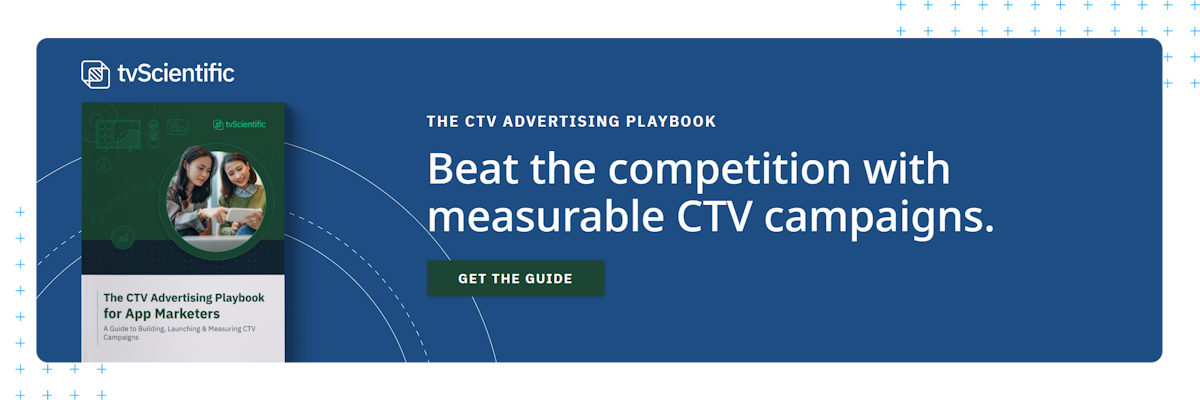What is mobile user acquisition? Our guide has everything mobile UA marketers need to know, from best practices to key metrics for determining success.
Bringing in a steady stream of new users is key to long-term mobile success
Between the Apple App Store and the Google Play Store, mobile users have access to millions of apps spanning every category imaginable. Gaming, productivity, finances, health and fitness — whatever users are interested in, there’s an app for it. While a thriving ecosystem is good news for the mobile industry, this also makes it harder than ever for app creators to reach new audiences organically.
One solution is targeted marketing campaigns designed with the goal of drawing in new users, but that’s easier said than done in an advertising landscape where costs are on the rise and a never-ending stream of content is causing some users to tune out entirely. In the modern mobile landscape, acquiring new users requires a comprehensive strategy built on a foundational understanding of what user acquisition is and how it works.
What is Mobile User Acquisition and Why Does it Matter?
User acquisition refers to the process of attracting new users to an app, platform, solution, or product. For mobile publishers, this means getting more people to download and install apps from their portfolio. User acquisition is a critical and arguably mandatory step in an app’s success; without an audience, there’s no way to maintain profitable growth. That said, marketing to users who have literally millions of other options is quite a challenge, particularly when traditional platforms no longer deliver the same performance as they used to.
In 2023 and beyond, embarking on a user acquisition campaign requires clear eyes and an open mind. You’ll need to investigate a bevy of platforms, ad formats, and creative strategies to find what works best for your app and your brand, and you can start with the best practices listed below.
Best Practices for Effective Mobile User Acquisition Strategies
Diversify Your Advertising Channels
In mobile UA, the industry version of “putting all your eggs in one basket” is dedicating a disproportionate amount of your resources to a limited number of paid advertising channels. For years, search engines like Google and social media sites such as Facebook were the twin pillars of mobile user acquisition. While they still have a place in a well-rounded UA strategy, advertising channels like connected TV (CTV) offer results-driven alternatives.
If “TV advertising” has you thinking about traditional commercials, that’s a far cry from the current CTV landscape. Connected TV ads have advanced targeting options that let you hone in on your intended audience and capture their attention when they’re already engaged. This blend of mobile-like precision and the scale of televised storytelling makes CTV one of the most promising channels for mobile UA marketers. To learn more about connected TV’s role in mobile user acquisition campaigns, check out our free ebook: The CTV Advertising Playbook for App Marketers.
Invest in App Store Optimization (ASO)
Nearly 60% of app downloads come from searches within app stores, so it’s critical to ensure your app is among the top choices. The process of optimizing your app store listing to increase visibility is known as app store optimization (ASO), and it’s one of the most important tools at a mobile UA marketer’s disposal. It starts with a strong product description and striking creative assets that accurately represent the app’s content, but ASO doesn’t end there. You’ll want to include thoughtful keywords that match search intent; these might be the category of the app, genre of a mobile game, or your brand itself. Make sure your app is categorized correctly, and use a subcategory for additional context where applicable.
Leverage Influencer Marketing
The rise of influencer culture has fundamentally changed how brands engage with their audiences. This relatively new concept has ballooned in market size from $1.7 billion in 2016 to $16.4B in 2022, with a 29% jump expected in 2023. Seen as more trustworthy than traditional celebrity endorsements, influencers leverage the platforms at their disposal (typically various types of social media) to reach a captivated audience of anywhere between a few thousand and several million followers.
Leveraging influencer marketing is an effective way to drive new users to your app, but there are some considerations to be had before forming any influencer partnerships. It might be tempting to cast a wide net and consider those with the most followers, but micro-influencers (those with under 50,000 followers) often have more engaged audiences, helping you reach your mobile UA goals at a fraction of the cost. Most critically, make sure any influencers you work with are appropriate for your brand voice and identity, as a mismatch can be devastating for your reputation.
Circle Back With Retargeting Campaigns
It’s not uncommon for users to interact with your ads but fail to convert the first time, which is why retargeting campaigns should be a part of any mobile user acquisition strategy. Retargeting is the practice of showing follow-up ads to consumers who have previously been exposed to your brand in some way, such as visiting your website or viewing a social media ad. One of the best ways to keep your brand top-of-mind is web-to-TV retargeting, which follows potential consumers throughout their journey and catches their attention again at a time when they’re more engaged. Because of CTV’s precise targeting and next-level attribution, it’s now possible to deliver ads specifically to these consumers, giving you a second chance to convert interested parties into app users.
Key Metrics for Determining Mobile UA Success
How do marketers determine whether or not their mobile user acquisition strategies are working as intended? It all comes down to the data. When analyzing your results, pay attention to these key metrics:
- Cost per install (CPI): Getting more users to install your app is the ultimate goal, but don’t lose sight of your bottom line. As a key performance indicator (KPI), CPI lets you know exactly how much you’re paying to acquire each new user. If those costs outweigh the value of the users, it’s time to change up your strategy.
- Clickthrough rate (CTR): CTR measures the number of users who not only see your ad, but click through to the next step in the process. That click might take them to your website or an app store page, and is calculated by dividing the number of clicks by the number of overall ad impressions. This gives you a healthy measure of the effectiveness of your ads. If users are overwhelmingly looking and not clicking, take that as an opportunity to change up your creative assets or call to action.
- Lifetime value (LTV): Attracting new users is the key to app growth, but if those users never open your app or delete it right away, they’re not delivering value. By calculating the lifetime value (sometimes called customer lifetime value, or CLV) of converted users brought in from marketing campaigns, you’ll be able to see which platforms are delivering the most valuable users and adjust your strategy accordingly.
- Customer acquisition cost (CAC): Different platforms come with different costs for acquiring new users, and not every platform delivers the same value. It’s important to analyze these acquisition costs to see which channels are making the best use of your budget, also known as…
- Return on ad spend (ROAS): Ultimately, your marketing efforts should be delivering a higher value than you paid for them. When you divide the amount of revenue earned by the amount spent on these ads, you’ll see your return on ad spend, which provides a high-level view of how successful your mobile user acquisition campaigns have been.
Grow Your App With tvScientific
Mobile user acquisition is a complex process that requires thoughtful strategy, expert-level data analysis, and a willingness to adapt to the changing advertising landscape. Let tvScientific’s advanced CTV platform do the heavy lifting for you while increasing reach and ROAS. Our outcome-based solutions allow you to choose targeting options from over 15,000 segments, with real-time reporting giving you an easy way to track those vital KPIs. To learn more about the user acquisition potential of connected TV, get in touch to set up a free demo.







